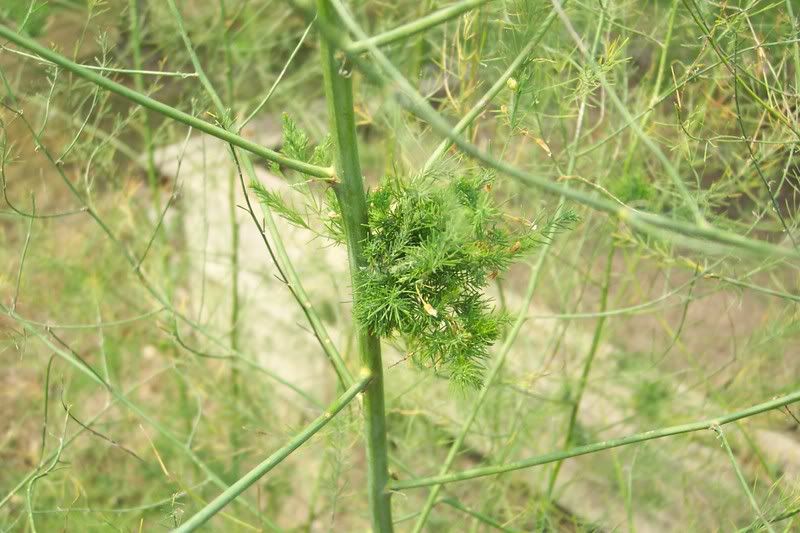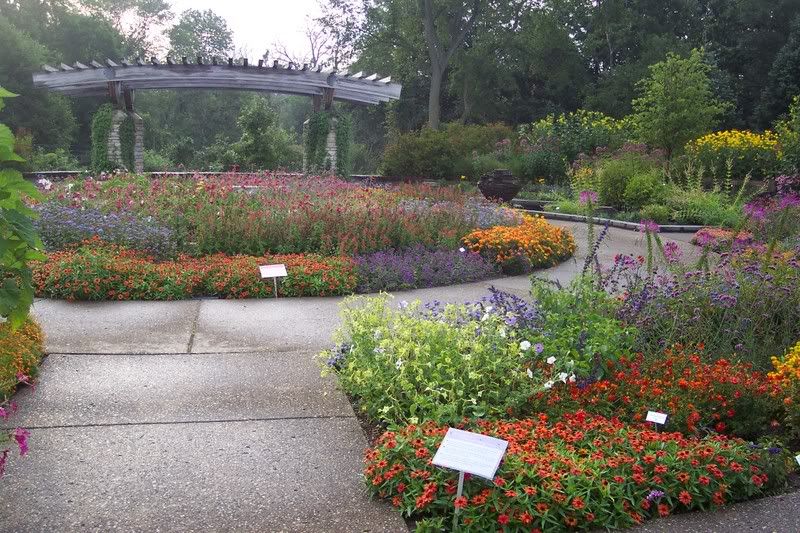 In In the centers of the beds, in the annual garden that I take care of, are the taller flowers. Cleome ‘Violet Queen’ is 4 feet tall, with a cluster of pure, purple, funnel shaped flowers. It starts blooming early and continues to bloom as it gets taller. It has little thorns on it so I like to keep it away from the outer edges of beds so people don’t accidentally get scratched.
In In the centers of the beds, in the annual garden that I take care of, are the taller flowers. Cleome ‘Violet Queen’ is 4 feet tall, with a cluster of pure, purple, funnel shaped flowers. It starts blooming early and continues to bloom as it gets taller. It has little thorns on it so I like to keep it away from the outer edges of beds so people don’t accidentally get scratched.
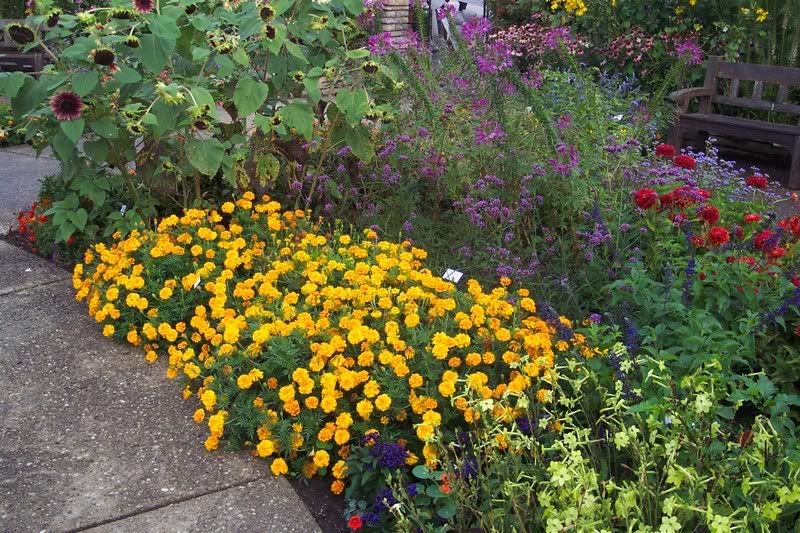
One of our favorite flowers is Verbena bonareinsis. It doesn’t usually have a common name listed, but I think Purple Haze would fit very well. It’s three feet tall with only a few leaves near the base of the plant, and stiff, wiry stems with a cluster of smaller purple flowers on top. Butterflies love it, since it’s not very full looking or thick with leaves , we let it grow where ever it seeds itself. The flowers behind it can still be seen very well. It adds a dusting of purple to the garden.

Each bed has a stand of sunflowers in it this year. The one that looks the best in the beds is ‘sonja’. Only 3 to 3 and a half feet tall, it blends in with the other flowers quite well. Another bed has a sunflower in it that turned out to be 6 ft, that one looks out of place with the other flowers. ‘Sonja’ has a small flower head, 3-4 inches wide and dark yellow petals with a dark brown center. Bloomed for quite a while, still is. Plus it attracts, like all other sunflowers, the goldfinches at this time of year. They add alot of excitement to the garden, while they cling to the hanging sunflower heads and jab away at the newly formed seeds.
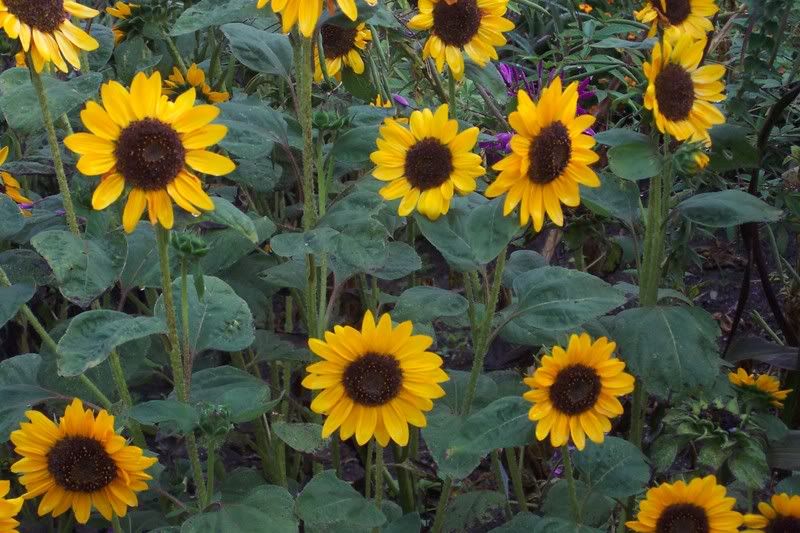
The bumble bees are buzzing around the cleome now. They push their way into the funnel shaped flowers to get to the nectar.
On the other side of one of the beds I can see the pale greenish tubuar blossoms of the Nicotiana ‘Lime Green’, a 18″ -24″ tall flowering tobacco. I think I will under plant the cleome with this nicotiana next year. The cleome gets bare at the bottom of the plant and the green and purple will look good together.
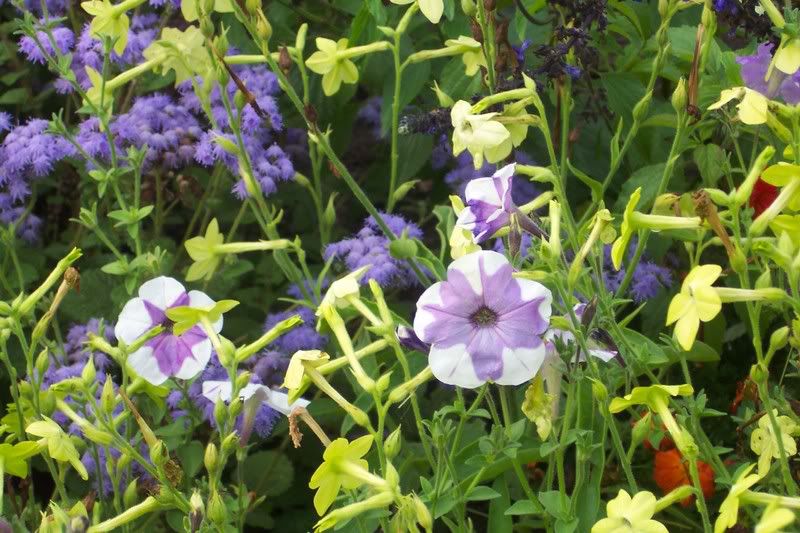
Butterflies and bees are all over this garden now that the morning has warmed up. It makes it so alive in here. So much to see. It really is a satisfying garden. Sight, sound, smell and the warmth surrounding me totally make the work that goes into this garden worthwhile.
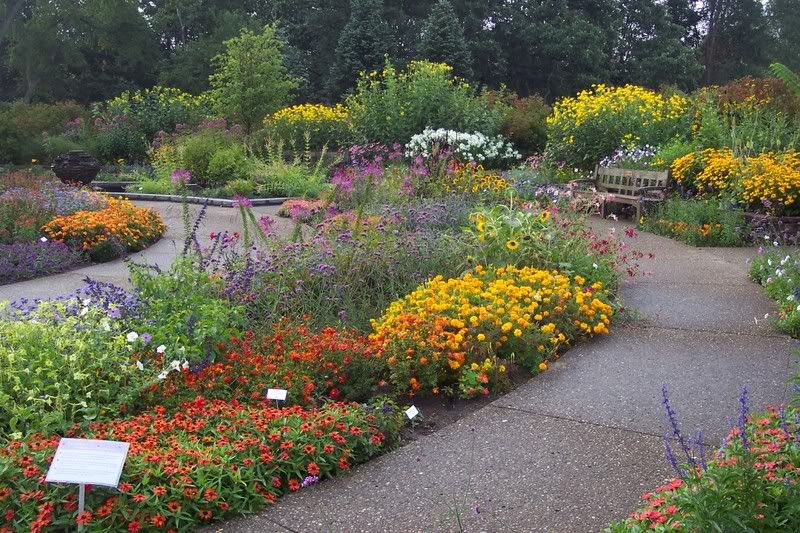
Happy Gardening, Judy
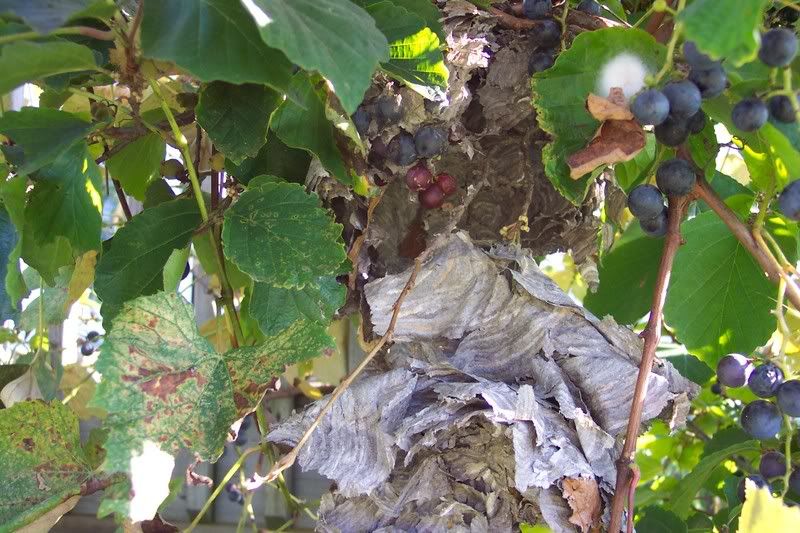

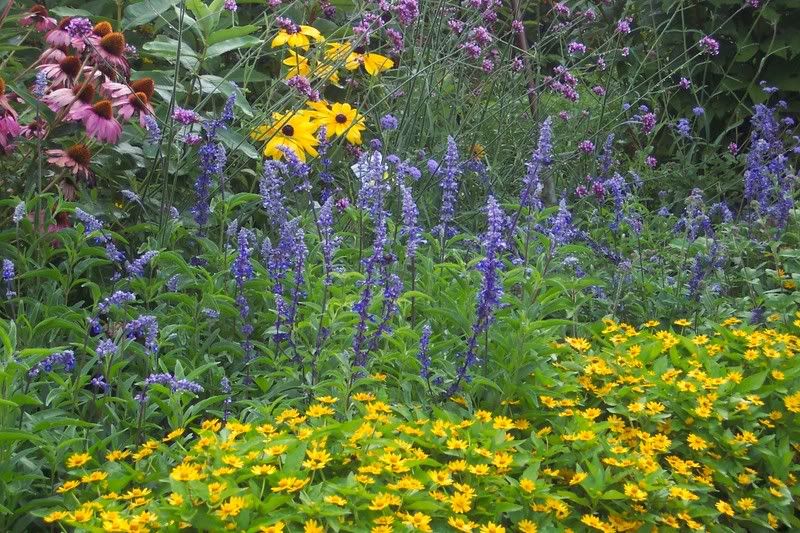
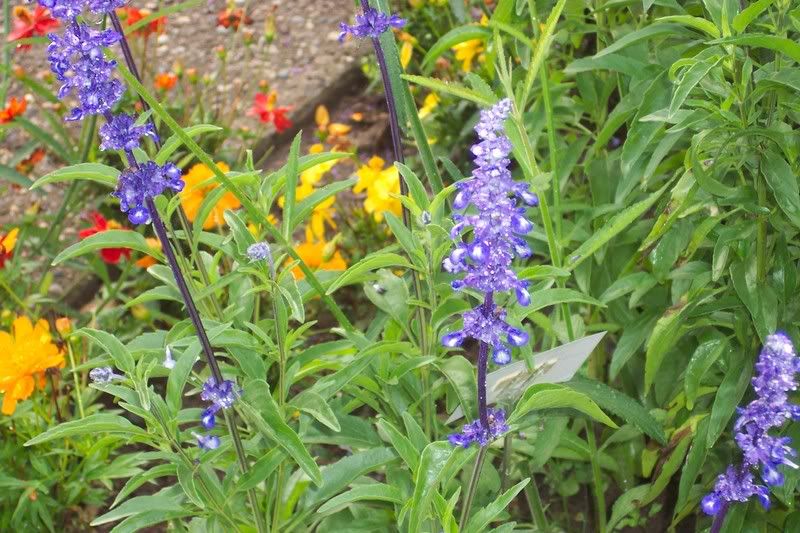
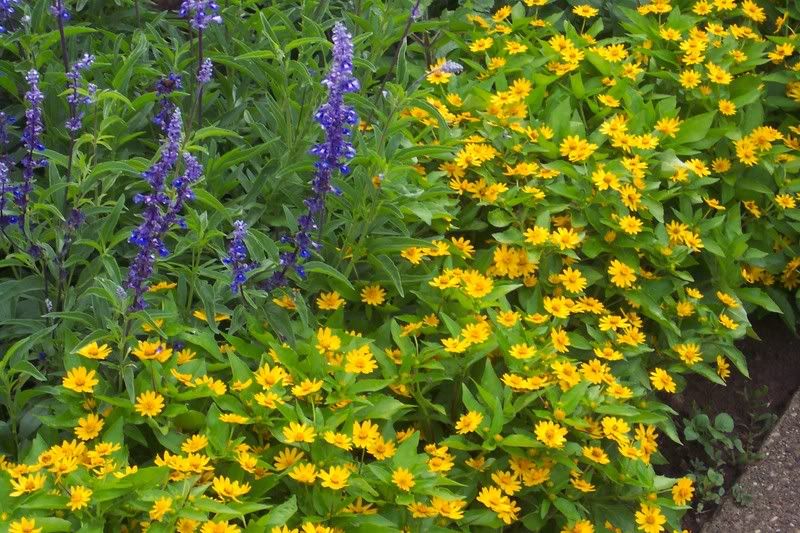
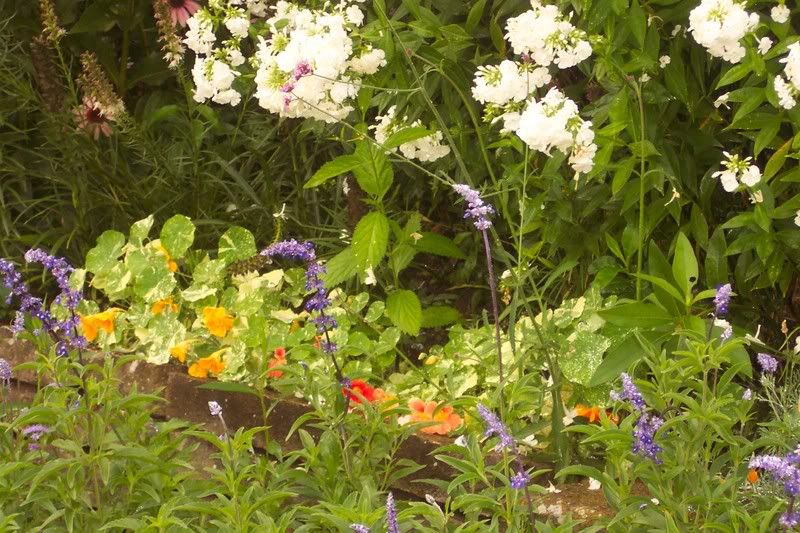

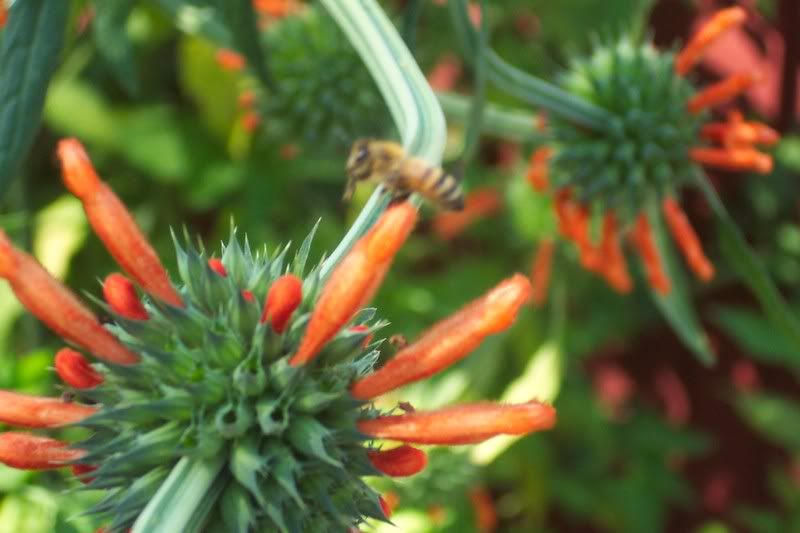
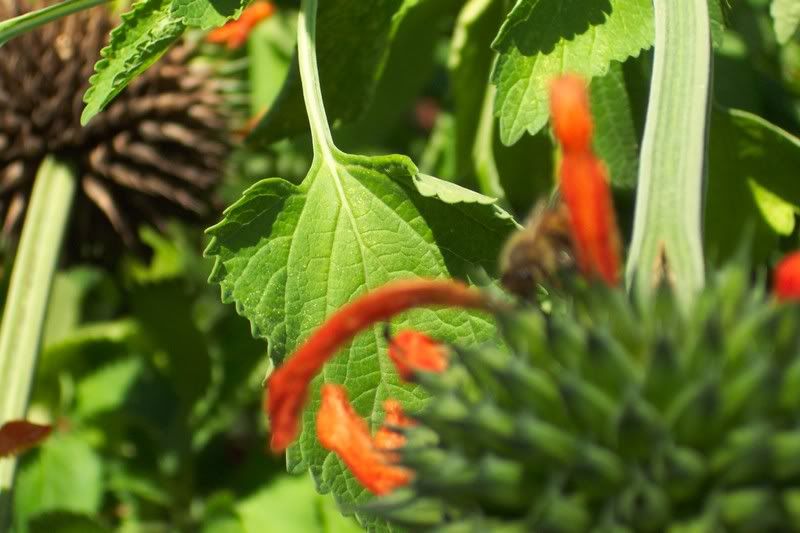
 In In the centers of the beds, in the annual garden that I take care of, are the taller flowers. Cleome ‘Violet Queen’ is 4 feet tall, with a cluster of pure, purple, funnel shaped flowers. It starts blooming early and continues to bloom as it gets taller. It has little thorns on it so I like to keep it away from the outer edges of beds so people don’t accidentally get scratched.
In In the centers of the beds, in the annual garden that I take care of, are the taller flowers. Cleome ‘Violet Queen’ is 4 feet tall, with a cluster of pure, purple, funnel shaped flowers. It starts blooming early and continues to bloom as it gets taller. It has little thorns on it so I like to keep it away from the outer edges of beds so people don’t accidentally get scratched. 




